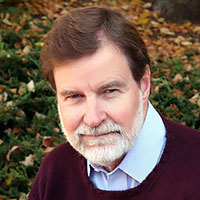Samuel H. Wilson, MD, National Institute of Environmental Health Sciences/NIH

Research in the Wilson laboratory is focused in the area of "genetic toxicology." The highly conserved, ubiquitous DNA repair pathway known as "base excision repair" (BER) is one of the key cellular defense mechanisms against the deleterious effects of metabolism, inflammation and environmental exposures to chemicals and physical agents. The Wilson laboratory has defined the main mammalian base excision repair (BER) sub-pathways using purified enzymes and cell extracts, and have cloned the human and mouse genes for many of the enzymes/factors, expressed the corresponding recombinant proteins in E. coli and insect cells, and prepared cell lines with genetic alterations in each gene. Transgenic mouse models are studied to understand the cellular and tissue requirements for each BER enzyme/factor. The program includes studies of the cellular role of BER in overall cellular DNA repair, apoptosis, check point control of the cell cycle, mutagenesis, chromosome stability, DNA lesion bypass, cell signaling, DNA replication control, human and mouse carcinogenesis and other environmentally-induced degenerative diseases. Studies of one of the mammalian BER enzymes, DNA polymerase beta, have pioneered in the use of a coordinated approach of structural studies (x-ray crystallography, NMR, and spectroscopy), biochemical studies, and mammalian genetic studies to understand genomic stability in mammalian cells.
Products
References
- Sobol RW, Kartalou M, Almeida KH, Joyce DF, Engelward BP, Horton JK, Prasad R, Samson LD, Wilson SH: Base Excision Repair Intermediates Induce p53-independent Cytotoxic and Genotoxic Responses. J Biol Chem 2003, 278(41):39951-39959.
- Endres M, Biniszkiewicz D, Sobol RW, Harms C, Ahmadi M, Lipski A, Katchanov J, Mergenthaler P, Dirnagl U, Wilson SH, Meisel A, Jaenisch R: Increased postischemic brain injury in mice deficient in uracil-DNA glycosylase. Journal of Clinical Investigation 2004, 113(12):1711-1721.



